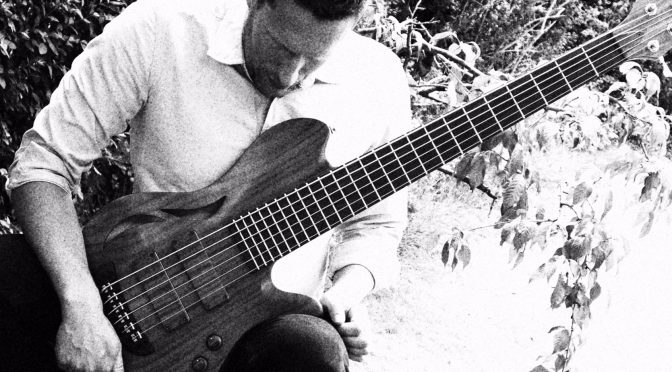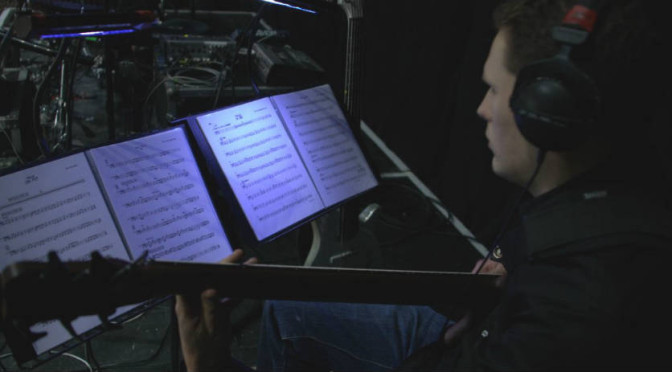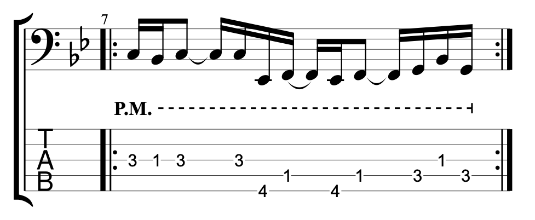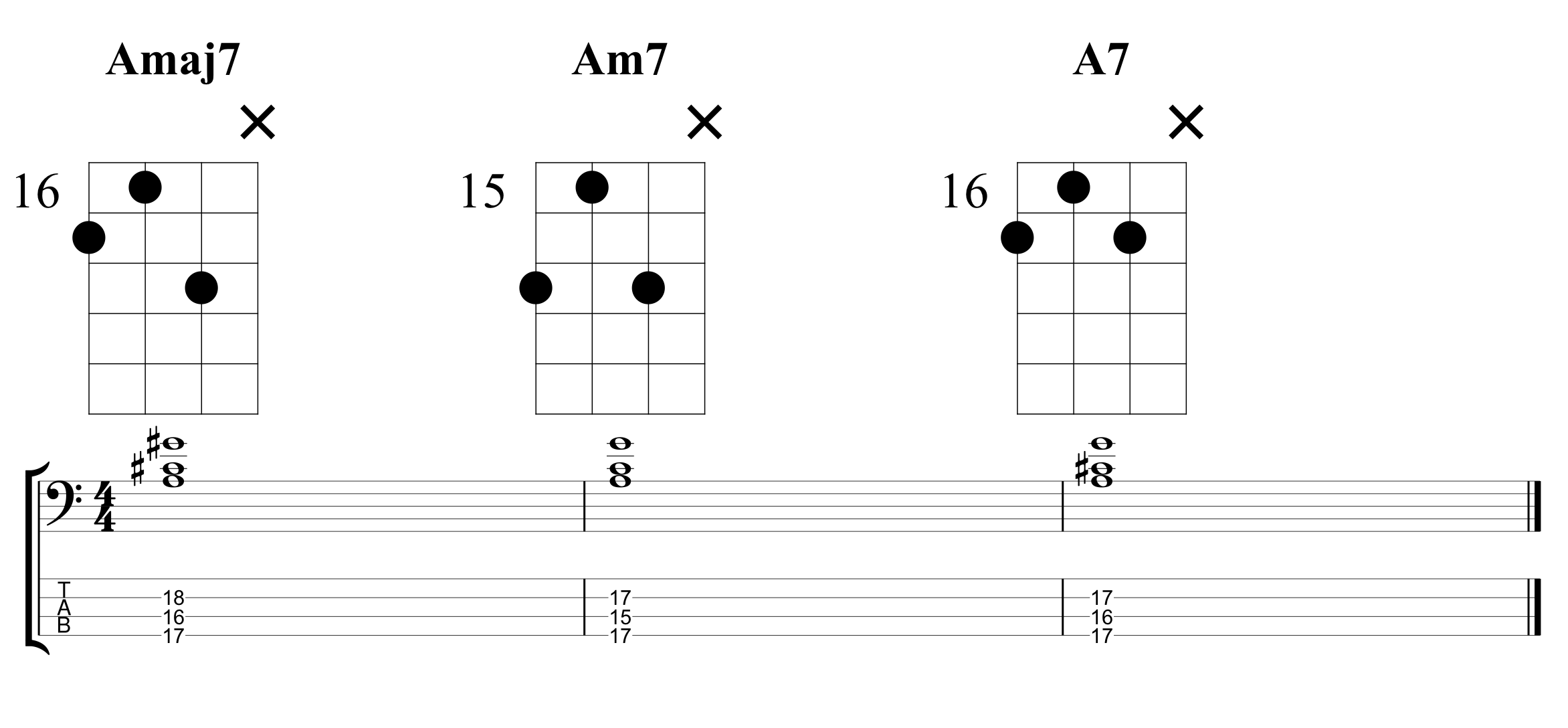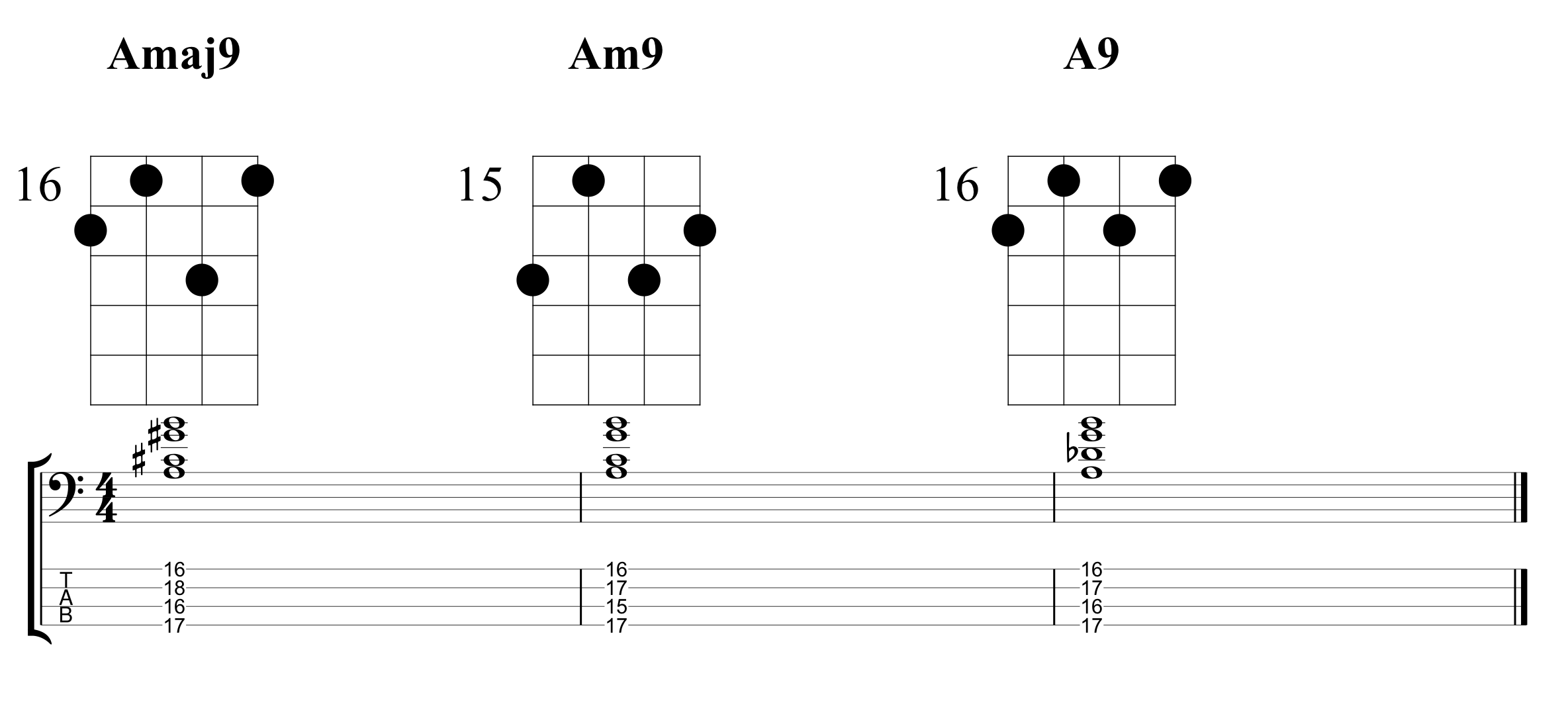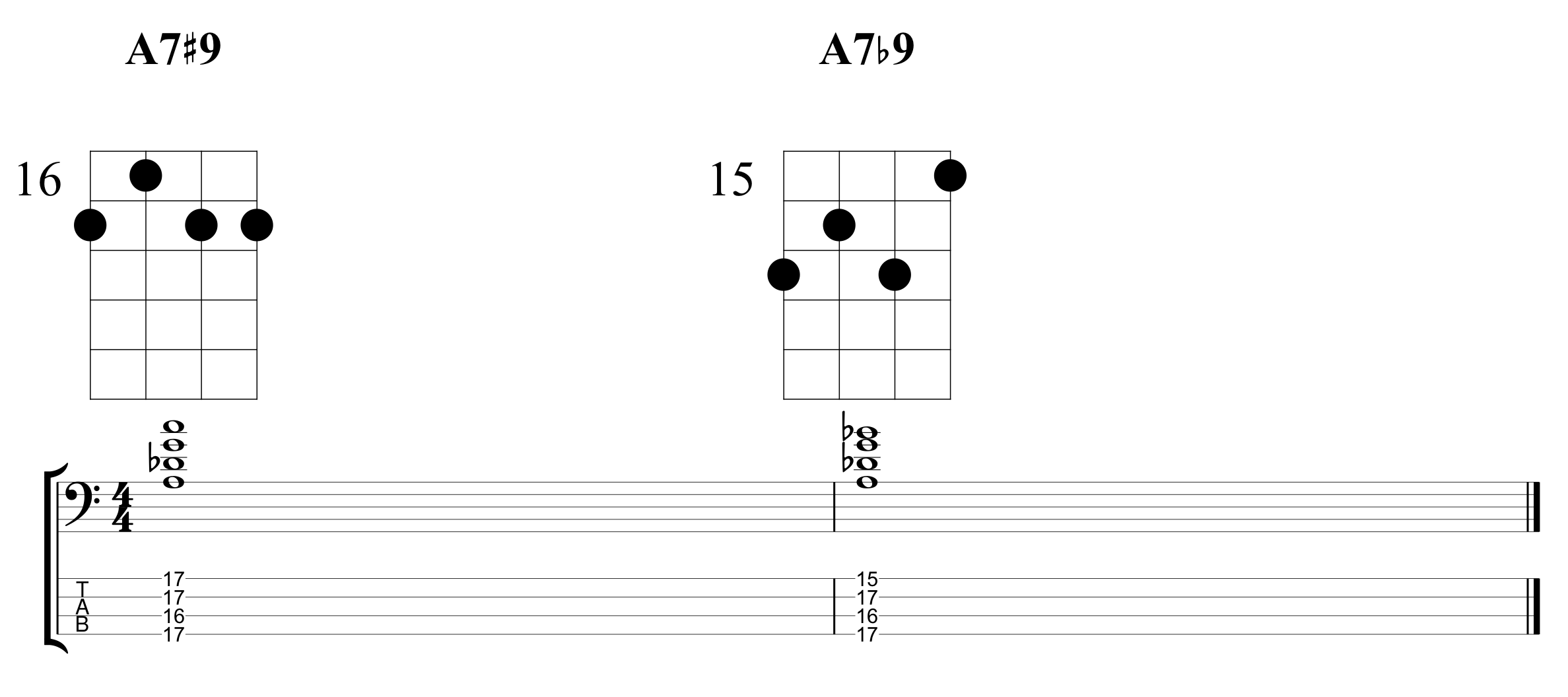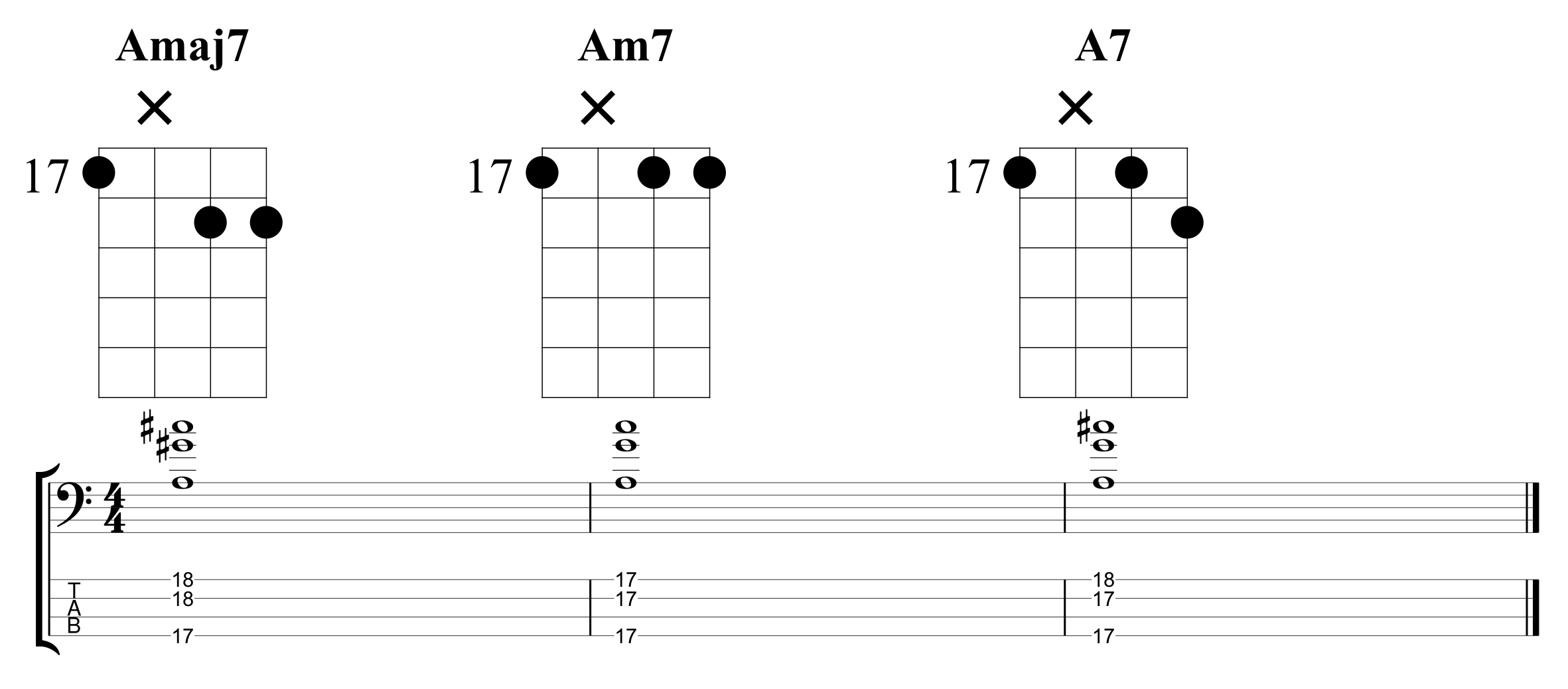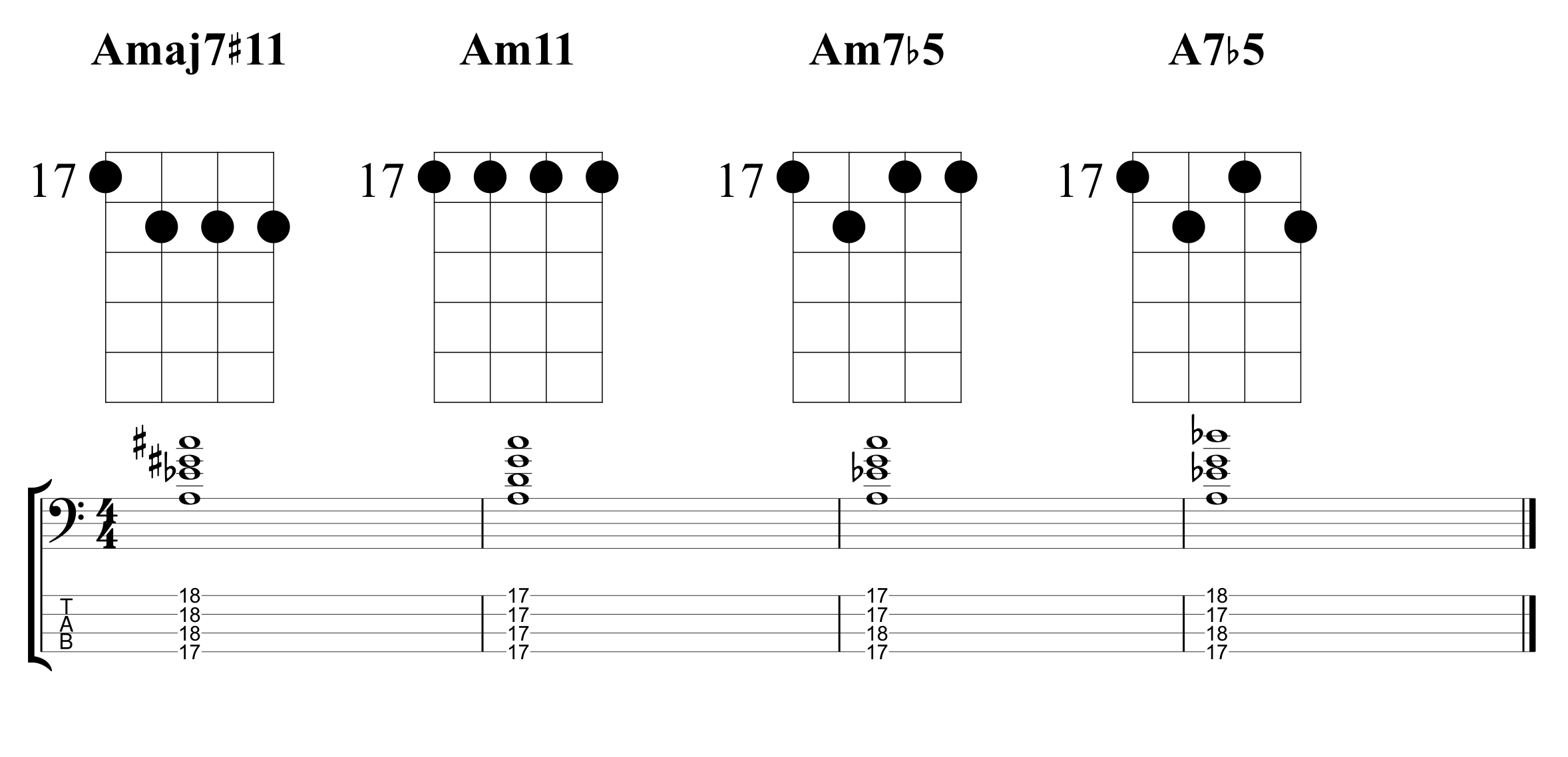Two- Hand Tapping Groove on Bass Guitar with Bass TAB – Bass Practice Diary – 27th October 2020
I haven’t done a video featuring two-hand tapping techniques for a while. I’ve had it in my mind to do a series of short video lessons demonstrating some of the tapping techniques that I use. I’m going to do that, starting next week, but first I thought I’d do a video demonstrating how you can apply two-hand tapping techniques to playing a bass groove. I think there’s a common perception of tapping techniques as being flashy soloing techniques. But the truth is that you can use these same techniques to groove. So this week, I’ve written this two-hand tapping groove by way of demonstration.
The Two-Hand Tapping Bass Groove


I won’t break down all the techniques that I’m using here, because I’m going to do that over the next few weeks. But essentially this groove is just based around two dominant 7 chords, G7 and C7. I’ve played it and TAB’d it on 5-string bass, but you can play it on 4-string. You can move the F and G notes at the start onto the first and third fret of the E-string. It’s slightly easier to tap those notes on the low B-string, that’s the only reason I’ve played it on a 5-string.
Why Two-Hand Tapping on Bass?
Playing two-hand tapping techniques on bass is not a particularly new idea. Solo bass virtuoso’s like Victor Wooten and Billy Sheehan have been showcasing these techniques for decades. But the popular conception of tapping is still that it’s a guitar technique. The truth is, that tapping works just as well on bass as guitar. But the image of tapping by 1980’s rock guitar heroes like Eddie Van Halen and Steve Vai has left an indelible print in popular consciousness.
My own journey with tapping started as a teenager, after hearing one of the above mentioned guitarists and thinking “can I do that on bass?”. It turned out I could and it wasn’t particularly difficult. At that time tapping was just a party trick for me. But my relationship with tapping changed when I started playing with the Chapman Stick player Jim Lampi.
What’s the Best Instrument for Two-Hand Tapping?
The Chapman Stick is designed as a two-hand tapping instrument. It usually has either ten or twelve strings, half the strings are played with the right-hand and the other half the left. Jim plays the Stick with quite a pianistic approach. He doesn’t go in for the flamboyant rock guitar techniques, but instead uses his instruments to play jazz and make soundscapes and back up singing. He most famously played in John Martyn’s band. Tony Levein is a bass player who also played Chapman Stick.
Jim Lampi opened my eyes to two things about two-hand tapping. One is that it can be incredibly versatile and used musically in any number of different contexts. The other is that, if you want to take two-hand tapping seriously, you should think about investing in a proper two-hand tapping instrument like a Chapman Stick. While tapping works just as well on bass as guitar, the truth is that neither guitar or bass is an ideal instrument for tapping.
I did think once upon a time about investing in a Chapman Stick, but the truth is, that I don’t want anything to distract me from playing the bass. So, I’m going to continue to treat two-hand tapping as a fun diversion from my more frequently used bass techniques.

